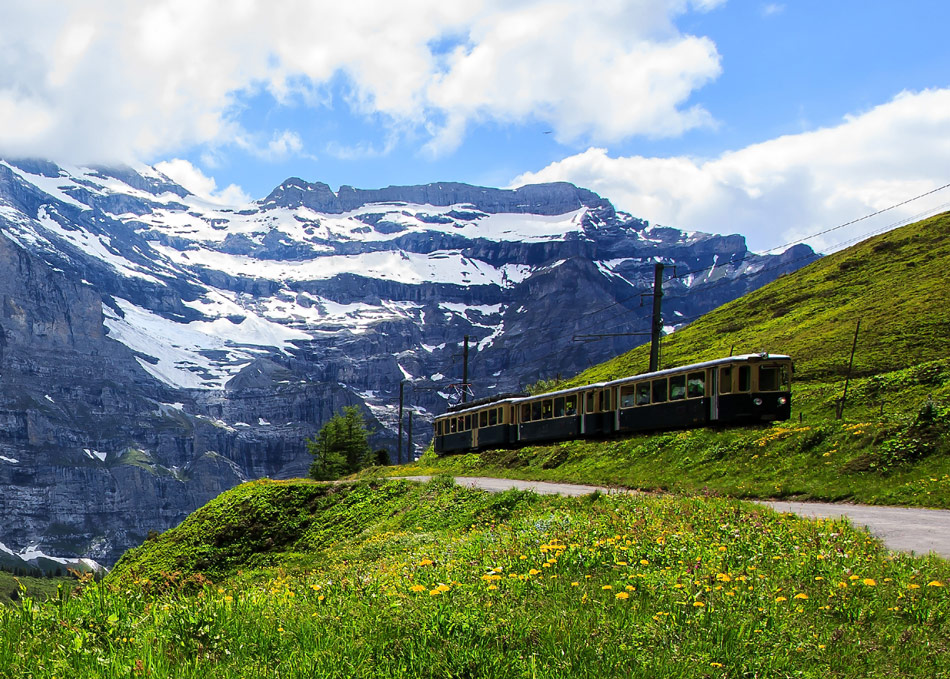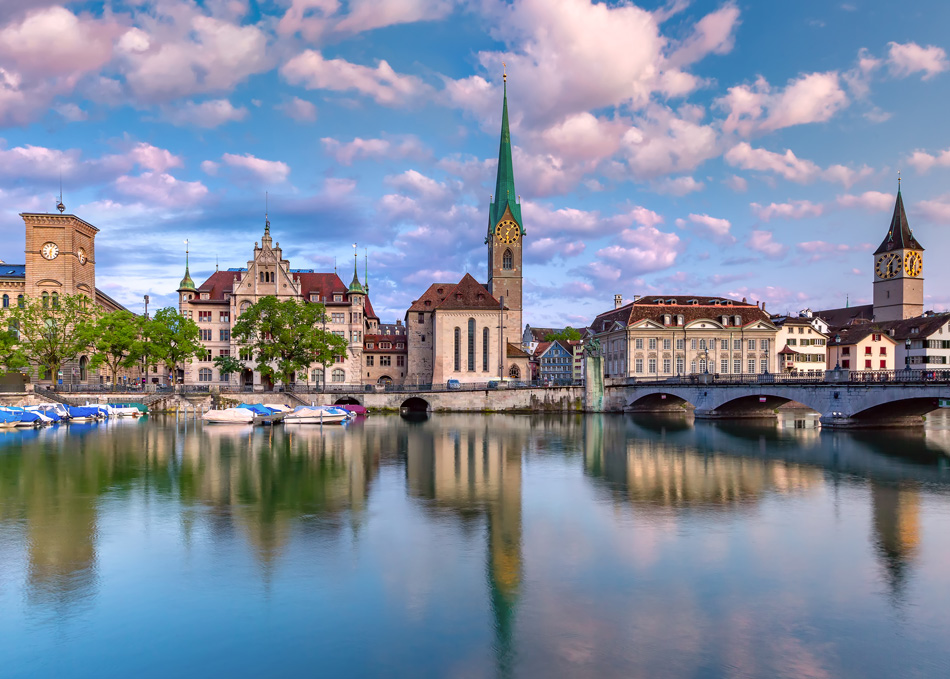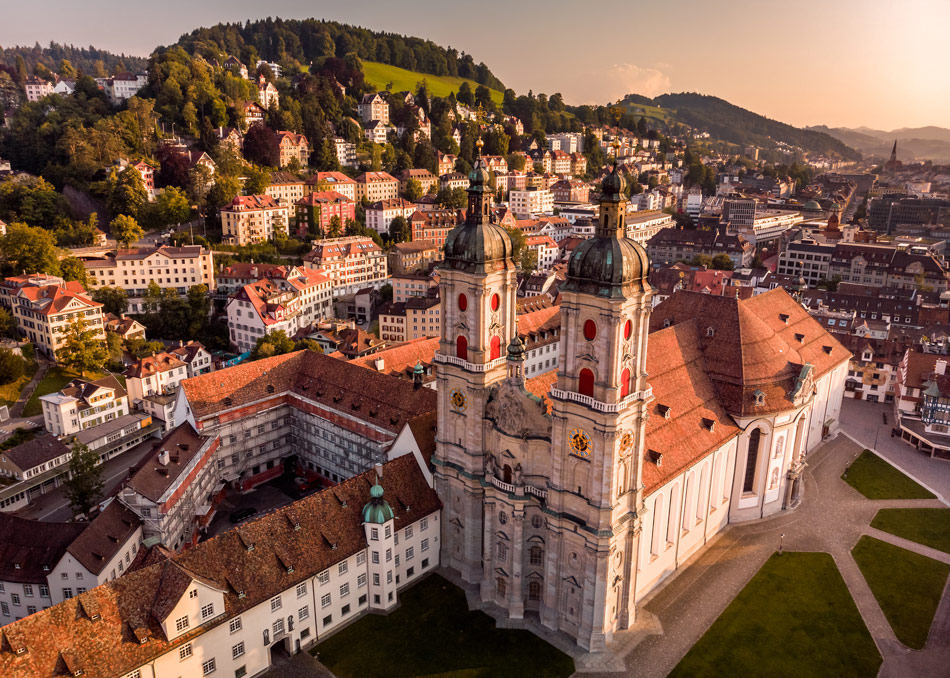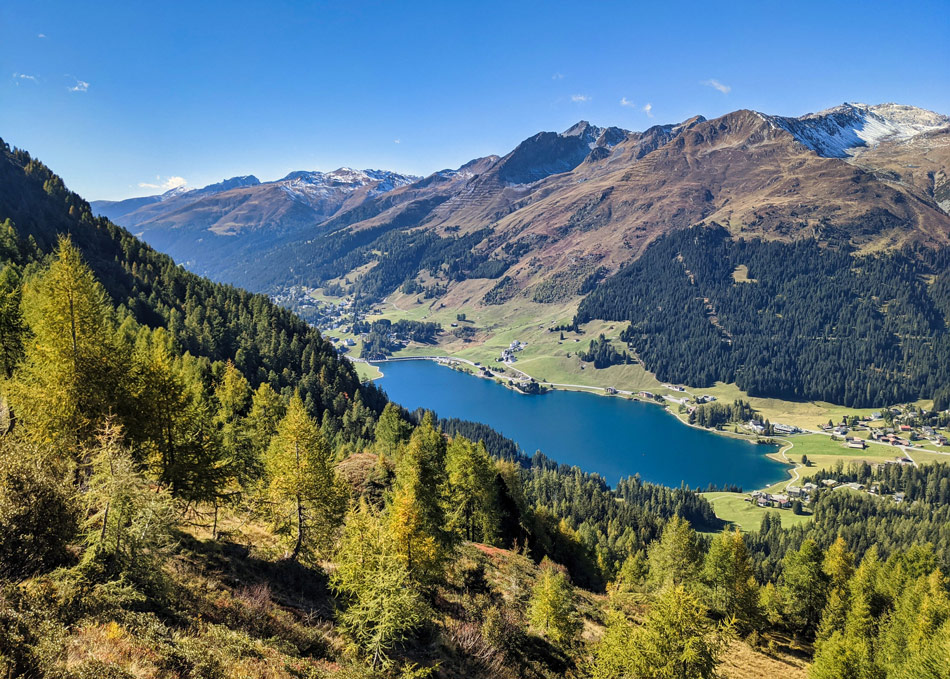A world of wonder awaits in Wengen. This alpine village made its mark for being where the famous Lauberhorn ski races are held, though it’s stunning all year round: encased in dramatic snow-capped mountains and sweeping green vistas, filled with trees in shades of emerald and jade.
There are lots of ways to see this compelling corner of the Bernese Oberland region. A range of incredible hikes and trails are available, as well as the Jungfraujoch: Europe’s highest railway, 3,454 metres above sea level, which snakes through the mountains and offers unmatched views. If you time your visit right, you might also be able to loop in a local event, such as Mendelssohn Music Week which takes place each August.
Waiting to greet you is the beautiful Hotel Falken, built in 1894. Furnished in traditional alpine style, it’s the perfect place to immerse yourself in the spirit of the area before carrying on with the next leg of your journey.


Up next is an iconic Swiss city that’s filled with exceptional restaurants, shops, sights, and activities… while also boasting its own mountain, river and lake!
Days in Zurich burst with variety. Bask in history in the city’s ‘Altstadt’ (Old Town) or head to one of its many fascinating and fun museums before cruising along the Limmat, or indulging in some retail therapy at the Bahnhofstrasse – its premiere shopping street. After fuelling up on fondue, a trip up the Uetliberg is a must, where unparalleled panoramic views are on tap. From calming dips into nature to exhilarating experiences of the cosmopolis, a trip to Zurich delivers on all fronts. Build your perfect plan here.
A four-star boutique hotel in one of the city’s most loved and explored locations, Marktgasse Hotel is the ideal place to set down your bags. Don’t miss a trip to their restaurant, IGNIV, to add a gourmet edge to your getaway.
Quaint St. Gallen is the next stop to tick off your list of Swiss destinations – a charming locale home to several UNESCO World Heritage sites, and neighbouring some of the country’s most extraordinary nature hotspots. In particular, a trip to the Abbey Cathedral is considered essential: an ornate library lies within, containing the oldest literature collection in the country.
Beyond its other museums and galleries, this beautiful city is just a short drive away from Lake Constance, which you can drive, walk, or cycle to on a hired bike. The third largest lake in Central Europe connects Switzerland with Germany, Austria, and Liechtenstein here, and it’s a joy to explore year-round. Sail across its waters, dip into thermal baths and more during a day trip you’ll never forget.
Another perk of Lake Constance is its proximity to Schloss Wartegg, one of our historic hotels from the sixteenth century. Empress Zita used to stroll through its grounds – it’s a beautiful building outside and in.


For the last leg of your journey, step lively to Klosters: an alpine village that, since being quietly established over 800 years ago, sprung to fame in the past century as a first-class skiing destination. International travellers flock here for a taste of alpine life, a convivial mix of wining, dining, outdoor adventures, and meeting with friends in the spectacular Swiss Alps. For music lovers, it’s home to the Klosters Music festival, too, which celebrates the village’s heritage over days of performances.
Of course, the highlight of a trip to Klosters is its surrounding slopes. Head up to the Davos Klosters ski areas to do everything from zipping down snowy ski routes to enjoying horse-drawn sled rides. Visiting here is a treat in the summer as well, where hikers, walkers, cyclists, and families of thrillseekers will find plenty to do.
At night, rest in one of the warm and welcoming rooms or suites at Hotel Chesa Grischuna. Having catered to several celebrities over the years, it’s fondly known as ‘Hollywood on the Rocks’! It’s a joyful place in which to sleep, dine and relax.
We recommend to stay in one of our historic accommodation, each one with its own “Story to share”.
Get the chance to win 2 rooms for 2 nights for 2 persons. Treat yourself and your friends.
Historic Hotels of Europe
Find amazing historic hotels and dive into the culture and traditions of Europe. Connect with a thriving community, enjoy excellent locations, and live your dream.